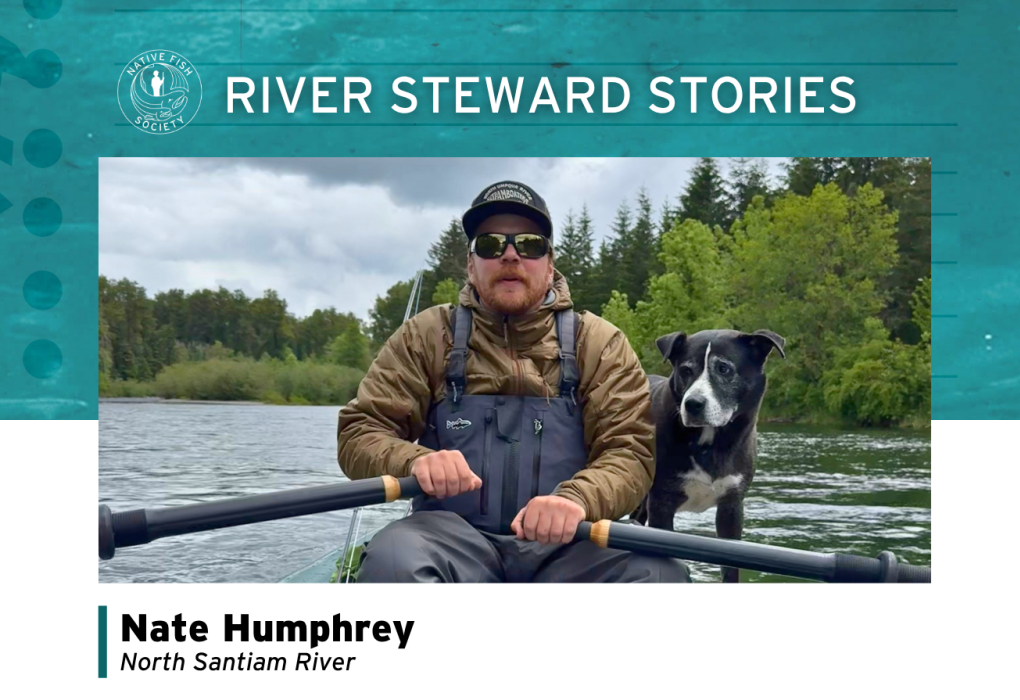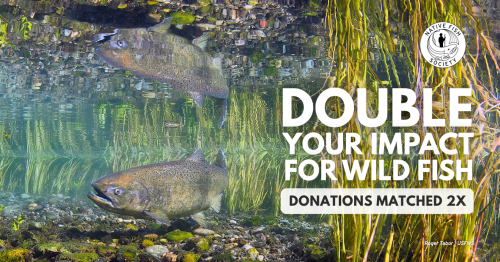River Steward Stories: Nate Humphrey
River Steward Stories is a new monthly series by Native Fish Society, where we get to know the River Stewards at the core of Native Fish Society’s conservation work building groundswell of public support for abundant wild fish, free-flowing rivers, and thriving Northwest communities.
Each month, we’ll dive deep and introduce you to a River Steward from around the Northwest, so you can learn more about what drives them, the rivers they serve, and how to connect with them.
With no further adieu, meet North Santiam River Steward Nate Humphrey!
~~~~~~~~~~~~~~~~~~~~
Meet Nate Humphrey: NFS North Santiam River Steward
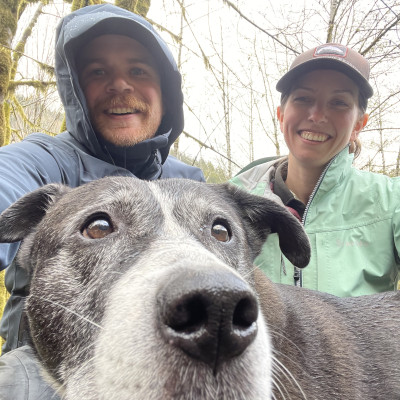
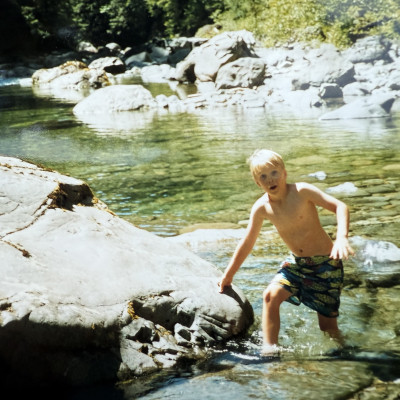
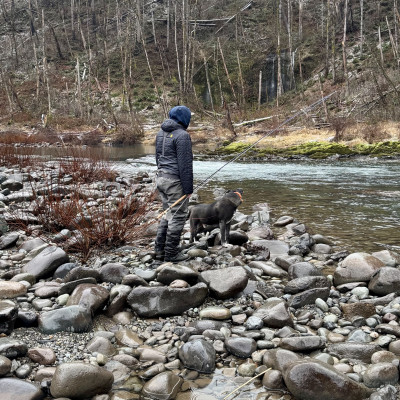
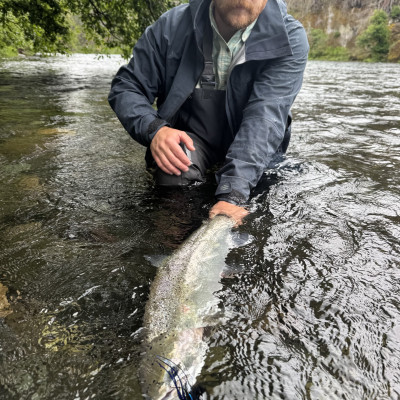
NFS (Bold) Describe your personal history/relationship with the North Santiam River?
N.H. (italics): I grew up on the North Santiam. I have vivid memories of swimming, canoe trips, hiking, fishing, and enjoying all that the watershed has to offer. My dad used to take me up the Little North Fork as a kid. We’d spend the day hiking up the creek. I moved away after high school, but I’ve always kept coming back to the river. When I found steelhead fishing, it was the perfect way to be more connected to the river.
What does the Native Fish Society represent to you?
I first reached out to Native Fish initially to see if anyone was doing spawning survey work and, if so, how I could get involved. It all grew from there. Some of my mentors and people I look up to most are involved with Native Fish. For me, wild fish are the real deal. I believe Native Fish Society represents this and is working for the representation of wild fish and the rivers they call home.
Why do Rivers need Stewards?
These rivers are amazing resources. If we don't work to protect it, who will? I think we can get overwhelmed by all the high-profile work that can and needs to be done. While being a steward to the river can mean taking down dams and fighting in court, it also means picking up trash at the boat ramp. Both are important and needed.
What is one (or more) thing(s) you find unique, that you find special, about the North Santiam River? Describe what the North Santiam River means to you.
There are so many special things about the North Santiam. Historically, two-thirds of the winter steelhead in the Willamette basin came from the North Santiam. Studies show that over 25% of adult winter steelhead on the North Santiam return to the ocean after spawning.
The North Santiam means so much to me, it’s hard to put into words. I grew up there. It's given me one of my best friends. It's also given me incredible memories and some of the best days I've ever had. I love this place. A day doesn't pass that I don't think about this river.
What keeps you motivated to continue your work as a River Steward on the North Santiam River?
For me, it’s easy: I love steelhead and I love this river. If you love something, it is your responsibility to contribute to protecting it. I don't want to look back and wish I could have done more. These fish and this river are too important.
In general, what are your conservation priorities for the North Santiam River?
Right now, my main focus is on habitat restoration on the Little North Fork, growing our spawning surveys, and the removal of invasive plants in the basin.
More specifically, what's working on the North Santiam River that you're looking to continue, or encourage growth in?
Lots of restoration work has been done since the Santiam Canyon Fire. It is exciting to see roads and parks reopen, and different organizations working together. The Santiam Canyon Fire was devastating, but people have banded together to help rebuild the basin. Our spawning surveys have grown every year, and I would love to see that continue.
Specifically, what are the premier challenges facing the North Santiam River that you're interested in working to rectify?
A very large percentage of wild winter steelhead use the unimpeded Little North Fork of the Santiam for spawning and rearing. This habitat was severely damaged by the Santiam Canyon Fire. The water temperatures have been dangerously high at times in the Little North Fork since the fire. Habitat restoration on the Little North Fork is key to the future and success of wild fish.
Describe what you see as the benefits to your community with a healthy, abundant, and resilient North Santiam River.
I think there are only benefits to the community from a healthy, abundant, and resilient North Santiam River. The community needs this river.
What's the very next thing you'd encourage community members to tune in to, or to be aware of, regarding the North Santiam River?
There have historically been fish counting on Upper and Lower Bennett Dams. The funding for these dams was cut in November of 2024. This funding allowed for a great tool for tracking the number of fish entering the basin. We are looking at ways to get the funding reinstated. Old parks have reopened this summer and will continue to in the coming months. If anyone is interested in doing spawning surveys, please feel free to reach out to me. I would love the help!
~~~~~~~~~~~~~~~~~~~~
River Steward Stories is a monthly series, so stay tuned for more inspiring conversations with the volunteers restoring and protecting their homewaters across the Pacific Northwest.
Follow along to learn about activities and opportunities to engage with the Portland Chapter of the Native Fish Society on Instagram at @nfs_pdx
If you have questions about the River Steward program, or Native Fish Society’s conservation campaign efforts in Oregon, contact Northern Oregon Coordinator Daniel Ritz at Daniel@NativeFishSociety.org or Southern Oregon Coordinator Charles Gehr at charles@nativefishsociety.org.
